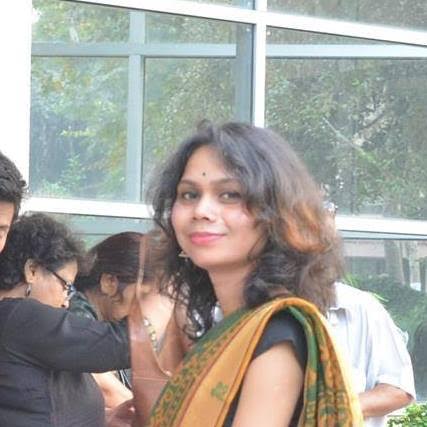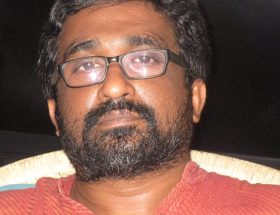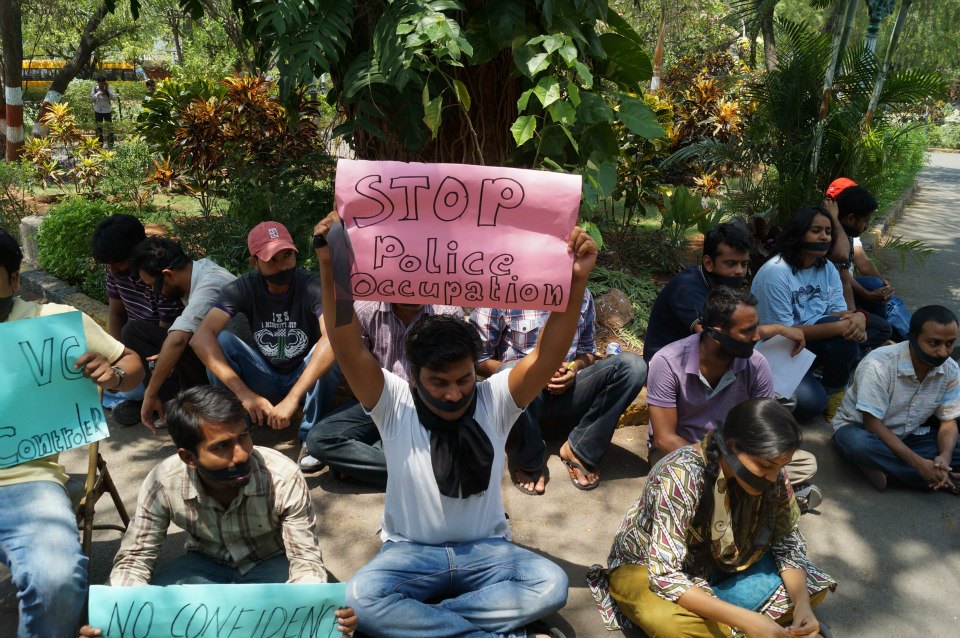“It is an Utsav, Not Puja”: Asur Utsav, Mulnibasi Culture and Challenges to Brahminical Hegemony
Georgy Kuruvilla Roy and Samata Biswas
(For Dalit Camera: Through Un-Touchable Eyes)
The social media is rife with allegations and counter allegations regarding the casteist, brahminical, Hindu and/or secular nature of Durga Puja. Mainstream Bengali media have chosen to ignore cyclone Phailin and the ensuing devastation in favour of a comparative analysis of pandals, idols and clothes. A significant section of urban young intelligentsia chooses to completely disavow all criticism, in favour of an imaginarily autonomous political society and the imperative to consume.
At the same time, the ‘Asur Utsav’ in Malda conducted by some sections of the Dalits, Tribals and OBCs, organized under the banners of the Majhi Pargana Gaonta and the Mulnibasi Samiti not only problematises the brahminical hegemony over the mainstream Bengali public sphere, but also contests the organization of Durga Puja as an upper caste brahminical injunction. This is an attempt to understand the celebration of the ‘Asur Utsav’ and the ideology behind it and by trying to understand how the ‘Mulnibasis’ speak to the public sphere.
The concept of the ‘Mulnibasi’ as the original inhabitant of India is an idea that has been present in Bengal for quite some time now. However, the translation of this idea into a praxis-oriented political discourse by an organization, basing itself on rationalism and the teachings of Buddha and Ambedkar, and presenting it through cultural self-assertion is definitely something new.
We went to Malda informed by half-heard and overheard ideas of the ‘Asur tribe’, their or some other tribe’s practice of Asur worship and the fear of one ritual being replaced by another.
What we found instead was a recognition of the commonality of the ‘Mulnibasis’. The appeal for ‘Asur Utsav’ clearly addresses its focal group: “Dear Mulnibasi (SC/ST/OBC/Religious Minority)”. ‘Mulnibasis’ are the people who have been kept outside the fold of an oppressive brahminical Hinduism, which at the same time seeks to aggressively Hinduise the margins. It is this brahminical, Aryan Hinduism that designates the Asurs as ‘ugly, weird, large toothed’ creatures with long nails, instead of recognizing them as who they were–the original inhabitants of the land, and people who were often brutally killed by the Aryans and whose descendants continue to be denied citizenship status.
It is in this context that the ‘Asur Utsav’ needs to be understood. By engaging with the memory of the Asurs, ‘Mulnibasis’ go beyond the discourse of rights that most civil societal arguments are caught up in and position themselves as subjects with a history and culture that should be revived. As David Das, one of the members of the Gaonta puts it: “King Hudur Durga was the indigenous king of India who was killed treacherously for the establishment of the brahminical system in India by the Eurasian Aryans. We are here to revive our culture so that our people can understand its real history. We call it an ‘Utsav’ or festival, but it is technically a fight against the brahminical system and the conspiracy they are hatching against us, so that we ‘Mulnibasis’ can understand the real reason behind our plight”.
The president of the Gaonta, Charan Besra, repeatedly asserts: “This is not a Puja, this is a festival. Because by terming it a Puja, we would bring ourselves back into the same Brahminical structure that has oppressed us. This is an ‘Utsav’ commemorating the memory of ‘Asur Samrat Hudur Durga’ for his bravery and his leadership of his people.”
The Asur Utsav, which was started last year, spread from just one place to thirteen this year. In all of these places, one could see the presence of pandals that were radically different from the Durga Puja pandals. Here, along with the idol of the Asur, we could see the presence of Buddha, Ambedkar, Ragunath Murmu, the great Santhali scholar who gave a script to the language, and also images of Sidhu and Kanu. The ‘Asur Samrat’ was adorned with bow and arrows, unlike the mythic-religious weapons with which Hindu deities are adorned.
At twelve of the thirteen locations, the ‘Utsav’ was held in fields or courtyards adjoining primary schools run by the Gaonta. The presence of children in their school dresses, the absence of religious and devotional music, pride of place given to images of Murmu, Ambedkar, Buddha, Sidhu, Kanu and Savitribai Phule (among others), quotations from Ambedkar, Benjamin Franklin and Freud, and the explicitly political and ideological nature of the festival, make the Utsav an important trope in the fight against Brahminism and the process of self assertion of the ‘Mulnibasis’.
The assertion’s importance is witnessed by the fact that the same people who used to visit Durga Puja pandals earlier, now no longer go there, and instead pay homage to ‘Asur Samrat’, remembering and reclaiming a past that they are willing to share.
The school children chanted: ‘Jai Jai Asur Samrat Hudur Durga’, and the President assures his audience that next year, ‘Asur Utsav’ will be conducted in fifty places.
~~~
Georgy Kuruvila Roy works with Dalit Camera in its Bengal Chapter. He is pursuing PhD in CSSS, Kolkata.
Samata Biswas, who teaches English literature, also works with Dalit Camera. She is pursuing her PhD from EFLU.









